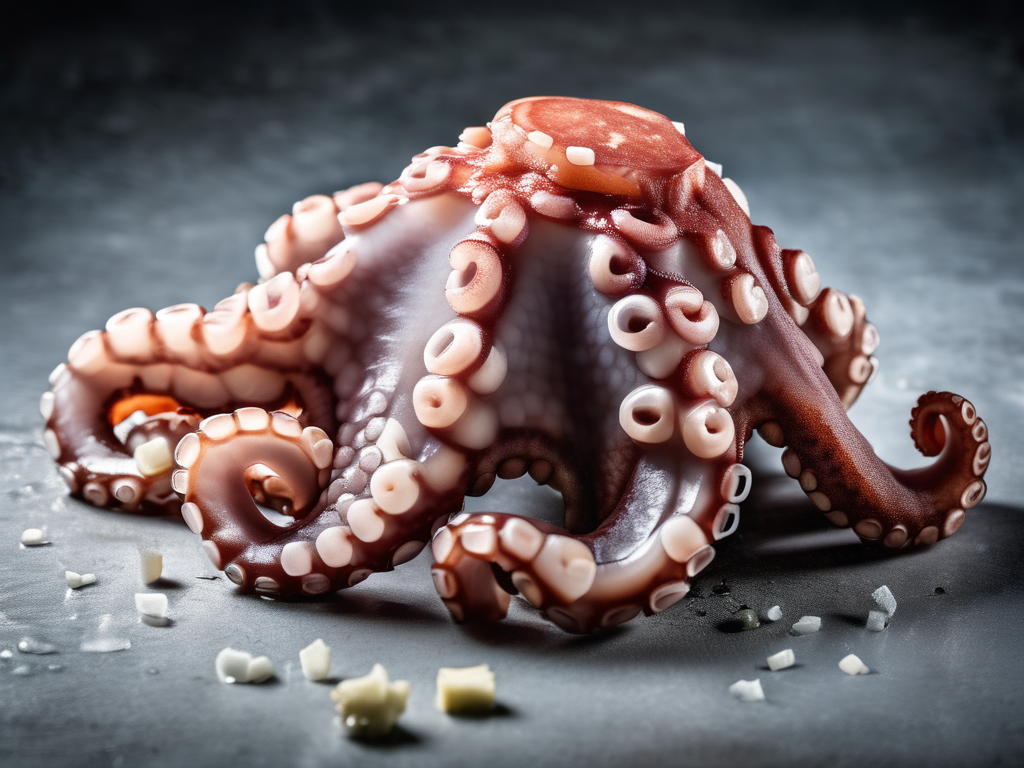
The Ultimate Guide to Properly Defrosting Octopus Purchased Commercially Frozen Raw
Get Your Free Food Safety Cheat Sheet
30 most common foods with instant answers. Print it and stick it on your fridge—completely free!
The Ultimate Guide to Properly Defrosting Octopus Purchased Commercially Frozen Raw
If you've purchased commercially frozen raw [octopus](/food/octopus purchased commercially frozen raw) and are unsure about the best way to defrost it safely, you've come to the right place. Properly defrosting octopus is crucial to maintain its quality, texture, and most importantly, to ensure food safety. In this comprehensive guide, we will walk you through the step-by-step process of defrosting octopus safely at home. (Octopus purchased commercially frozen raw)
Understanding Octopus Freezing Process
Before we delve into the defrosting process, it's essential to understand how commercially frozen octopus is typically processed and packaged:
- Commercially frozen octopus is usually cleaned, gutted, and frozen immediately after being caught to ensure freshness.
- Octopus is flash-frozen at extremely low temperatures to preserve its texture and flavor.
- It is then vacuum-sealed or packaged in airtight containers to prevent freezer burn and contamination.
The Importance of Safe Defrosting Practices
Properly defrosting octopus is crucial for food safety. When thawing octopus, it's essential to prevent the growth of harmful bacteria that can lead to foodborne illnesses. Follow these safe defrosting practices to ensure your octopus remains safe to eat:
-
Prevent Cross-Contamination: Keep the octopus separate from other foods during the defrosting process to avoid cross-contamination.
-
Maintain Proper Temperatures: Thaw octopus in the refrigerator or under cold running water to prevent bacterial growth.
-
Avoid Room Temperature Thawing: Never thaw octopus at room temperature, as this can promote bacterial growth.
Safe Methods for Defrosting Octopus
When it comes to defrosting octopus purchased commercially frozen raw, there are a few safe methods you can use. Here are the recommended methods for defrosting octopus safely:
1. Refrigerator Thawing
Refrigerator thawing is the safest method for defrosting octopus, as it maintains a consistent temperature throughout the process. Follow these steps for refrigerator thawing:
- Place the frozen octopus in a shallow dish or container to catch any excess liquid.
- Place the dish in the refrigerator and allow the octopus to thaw slowly over 24-48 hours, depending on the size of the octopus.
- Once fully thawed, remove the octopus from the refrigerator and use it immediately or store it in the refrigerator for up to 2 days.
2. Cold Water Thawing
If you need to defrost octopus quickly, cold water thawing is a safe alternative to refrigerator thawing. Follow these steps for cold water thawing:
- Place the frozen octopus in a leak-proof plastic bag to prevent water from seeping in.
- Fill a large bowl or sink with cold water and submerge the bagged octopus.
- Change the water every 30 minutes to ensure it stays cold.
- Thaw the octopus for 1-2 hours, depending on its size.
- Once fully thawed, remove the octopus from the water and use it immediately.
3. Microwave Thawing
Microwave thawing is not recommended for octopus, as it can lead to uneven thawing and may affect the texture of the octopus. If you must use the microwave, follow these precautions:
- Use the defrost setting on your microwave and thaw the octopus in short intervals to prevent overcooking.
- Check the octopus frequently to ensure it is thawing evenly.
Tips for Handling Thawed Octopus
Once you have successfully thawed your octopus, follow these tips for handling it safely:
- Rinse the thawed octopus under cold running water to remove any remaining ice crystals or debris.
- Pat the octopus dry with paper towels before cooking to prevent excess moisture.
- Cook the octopus immediately after thawing to maintain its quality and freshness.
Conclusion
Properly defrosting octopus purchased commercially frozen raw is essential for maintaining food safety and ensuring a delicious end result. By following the safe defrosting methods outlined in this guide, you can enjoy tender, flavorful octopus dishes with peace of mind. Remember to always practice safe food handling techniques to protect yourself and your loved ones from foodborne illnesses. (Octopus purchased commercially frozen raw)
Authoritative Food Safety References
These agencies and university labs inform every tip and health precaution we publish.
USDA FoodKeeper – Cold Storage Guidelines
Official refrigerator, freezer, and pantry timelines maintained by the U.S. Department of Agriculture.
Visit USDA FoodKeeperFDA Produce Safety Rule & Grower Guidance
Field-to-fridge handling practices that prevent contamination of fruits, vegetables, and leafy greens.
Visit FDA Produce SafetyCDC Foodborne Illness Prevention Hub
Surveillance-backed guidance on pathogens, symptoms, and steps to reduce foodborne illness risk.
Visit CDC Food SafetyUC Davis Postharvest Technology Center
University research detailing optimal storage atmospheres for produce after harvest.
Visit UC Davis PostharvestPenn State Extension – Home Food Preservation & Safety
Peer-reviewed extension bulletins on safe canning, chilling, and reheating practices.
Visit Penn State ExtensionGet Your Free Food Safety Cheat Sheet
30 most common foods with instant answers. Print it and stick it on your fridge—completely free! Want more? Upgrade to the complete guide with 70+ foods.
Scan your food directly and get instant safety info using our AI-powered camera feature.